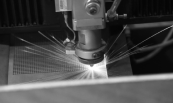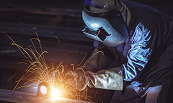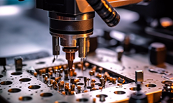0.10 Laser Cutting in Metal Fabrication & Automotive Industry
In today’s highly competitive industrial landscape, precision, efficiency, and automation define success. Two industries where these factors are non-negotiable are metal fabrication and the automotive industry. Among the various technologies adopted to meet these demands, laser cutting has emerged as a cornerstone.
This detailed guide explores how laser cutting has transformed metal fabrication and revolutionized automotive manufacturing. From basic principles to advanced industrial applications, this article dives deep into how fiber laser cutting machines, particularly from manufacturers like Laser Technologies India, are changing the way we build, shape, and scale.
Why Laser Cutting? The Need for Precision & Speed
In both metal fabrication and automotive sectors, precision and speed are critical:
- Tolerances in the microns are required for vehicle components
- High-speed processing reduces production time and costs
- Automated laser systems reduce human error and improve consistency
Traditional cutting methods like mechanical sawing, shearing, or plasma cutting fall short when it comes to fine detailing, edge quality, or handling reflective metals like aluminum and copper.
This is where laser cutting excels:
- High-speed, contactless processing
- Minimal material wastage
- Clean edges, burr-free results
- Adaptability to automation and Industry 4.0 systems
Basics of Laser Cutting in Metal Fabrication
Metal fabrication involves shaping, cutting, and assembling metal structures. Common materials include:
- Mild steel
- Stainless steel
- Aluminum
- Copper and brass
Laser cutting plays a key role in the cutting stage. The process involves focusing a high-power fiber laser beam, heating the metal, blowing away the molten material with assist gas, and using CNC-guided motion for accurate 2D or 3D cuts.
Machines like the GH Series Fiber Laser Cutter from Laser Technologies offer power ratings up to 30kW, ideal for cutting thick steel sheets with accuracy and speed.
Applications of Laser Cutting in Metal Fabrication
Laser cutting is used in:
Sheet Metal Cutting
- Cutting components for industrial equipment
- Making enclosures, cabinets, chassis, brackets
Structural Components
- I-beams, channels, and support structures
Decorative Elements
- Architectural panels
- Laser-cut grills, gates, and interior design elements
Custom Fabrication
- Small-scale and precision custom jobs for startups or prototyping
Laser cutting provides the flexibility to switch quickly between designs, enabling on-demand manufacturing and rapid prototyping.

Why the Automotive Industry Depends on Laser Cutting
The automotive sector relies on laser cutting for:
- Body-in-white components (chassis and structural frame)
- Engine parts (heat shields, brackets, mounts)
- Interior components (instrument panels, door trims)
- Battery trays and housing (especially in EV manufacturing)
- Tubular parts (exhaust systems, roll cages)
Automotive design is evolving faster than ever — and manufacturers must adapt quickly to changes. Laser cutting enables just-in-time production, making it easier to meet deadlines without stockpiling inventory.
Electric Vehicle (EV) manufacturers use fiber lasers to cut lightweight aluminum parts, essential for improving battery range.
Key Benefits of Laser Cutting in Automotive & Metal Fabrication
High Precision
Achieve tolerances as tight as ±0.05mm. Suitable for complex geometries and lightweight components.
Versatility
Cut different materials and thicknesses with one machine (e.g., mild steel, stainless steel, aluminum).
Speed
Fiber lasers can cut 10x faster than mechanical systems and offer real-time adaptability.
Low Maintenance
Fiber lasers have no mirrors, no moving beam paths, and a lifespan of over 100,000 hours.
Seamless Integration with CAD/CAM & CNC
Design-to-cut workflows ensure faster time to market.
Automation-Friendly
Robotic arms, conveyors, and IoT sensors can be integrated easily for 24/7 operation.
Laser Technologies' GH Series and LT EX Series come equipped with CNC automation, smart interfaces, and remote monitoring capabilities.
Real-World Case Studies: Laser in Action
Case 1: Auto Component Supplier, Pune
- Replaced 3 plasma cutters with a single 3kW fiber laser
- Increased production rate by 3x
- Reduced scrap material by 15%
Case 2: Heavy Equipment Manufacturer, Coimbatore
- Switched from mechanical cutting to 6kW fiber laser
- Achieved smoother edge quality, no post-processing needed
- Reduced downtime by 40%
Case 3: EV Battery Tray Maker, Bangalore
- Uses 4kW GH Series Fiber Laser for cutting aluminum trays
- Integrated with robotic loader and MES system
- Supports 24x7 production with real-time monitoring
What to Look for in a Laser Cutting Machine for These Industries
Power Range
- 2kW to 6kW for general fabrication
- 8kW to 15kW for thick sheet and mass production
Table Size
- 1500x3000 mm standard
- Go larger for bus/truck components
Automation Features
- Autofocus head
- Smart nesting softwar
- Real-time diagnostics
Software Compatibility
- Must support DXF, DWG, and other CAD formats
Laser Technologies machines are compatible with CypCut, Beckhoff, and smart factory interfaces, making them ideal for Industry 4.0 ecosystems.
Common Materials & Their Cutting Parameters
| Material | Thickness Range | Cutting Gas | Laser Power Recommended |
|---|---|---|---|
| Mild Steel | 1–25 mm | Oxygen | 2kW – 12kW |
| Stainless Steel | M1–20 mm | Nitrogen | 2kW – 6kW |
| Aluminum | 1–15 mm | Nitrogen | 3kW – 8kW |
| Copper/Brass | 1–10 mm | Nitrogen | 3kW – 6kW |
These numbers vary depending on the quality of laser source, gas purity, and cutting head technology.
Maintenance & Uptime: The Real Cost Advantage
Fiber Laser vs Others:
- Plasma cutters need consumables and frequent calibration
- CO₂ lasers require mirror alignment and gas refill
- Fiber lasers offer:
- No consumables (except nozzles/lenses)
- Minimal maintenance
- Higher uptime (98%+)
🔧 Laser Technologies provides AMC (Annual Maintenance Contracts) and real-time diagnostics for their high-end GH Series models, reducing unplanned downtime.
Future Trends: Where Is Laser Cutting Headed?
- AI-assisted cutting for real-time power adjustment
- Adaptive beam shaping for complex geometry
- Hybrid systems combining cutting, welding, and marking
- EV-specific laser setups for lightweight, complex assemblies
GH Series by Laser Technologies is ready for future integrations with Industry 4.0, including predictive maintenance and cloud monitoring.

Cut Smarter, Build Faster
In the metal fabrication and automotive sectors, time is money — and precision is everything. Laser cutting empowers manufacturers to move faster, reduce waste, and adapt to change with confidence.
If you're looking to set up a fabrication facility or upgrade your auto parts production line, machines like Laser Technologies' GH Series offer a future-proof solution with unmatched performance, support, and cost-effectiveness.
Next in Laser Cutting University: “How Laser Cutting is Used in Aerospace & Medical Devices”






